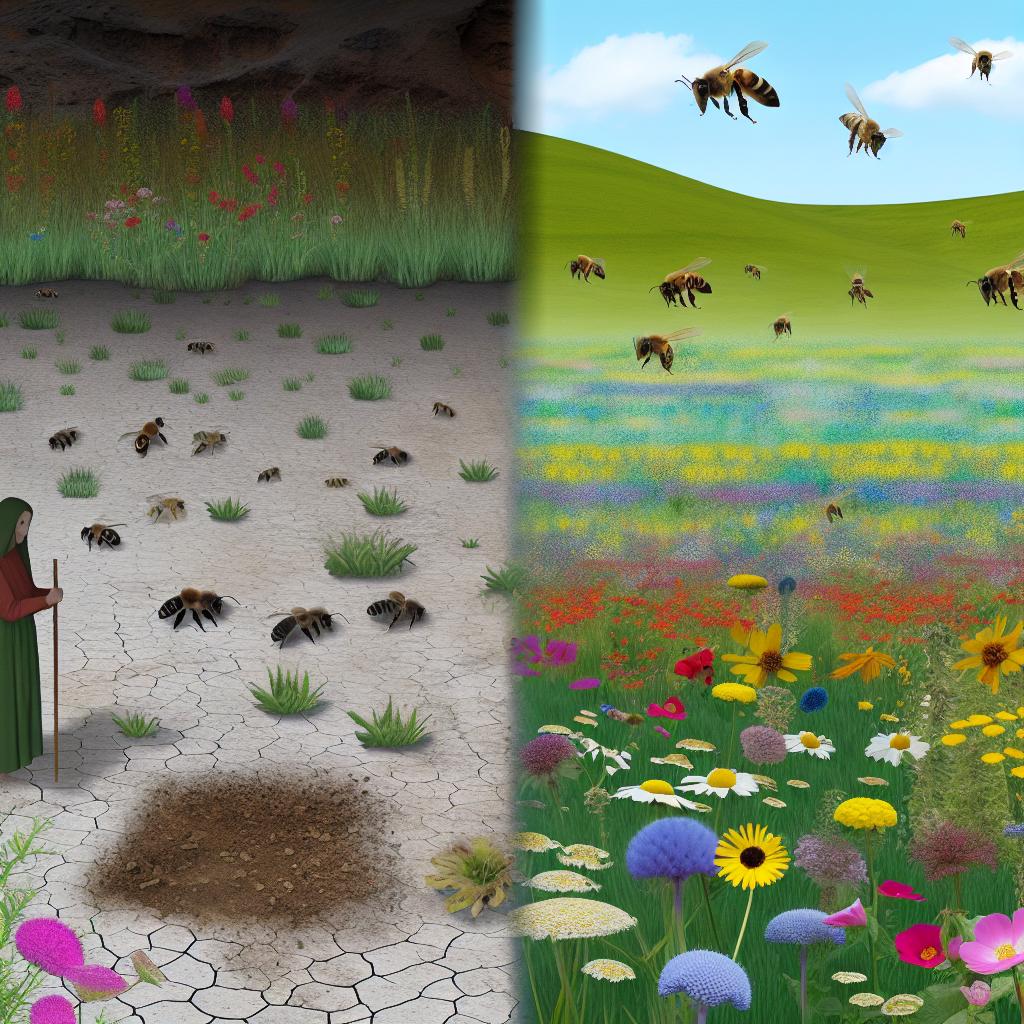
Can Rewildering Help Save the Bees?
Understanding Rewildering
The concept of rewildering encompasses the process of bringing landscapes back to their inherent, untamed states. This ecological tactic focuses on elevating biodiversity, reviving natural processes inherently disrupted by human activities, and rebuilding habitats to nurture a broad variety of species, including essential pollinators such as bees. These measures contribute to the revival of complex ecosystem dynamics where flora and fauna can thrive under more natural conditions.
The Importance of Bees
The role of bees in ecosystems cannot be overstated. They are integral to the pollination process, a biological mechanism crucial for the propagation and reproduction of numerous plant species. Pollination affects not only wild vegetation but also numerous food crops that humans depend on, thereby ensuring the sustainability of diverse ecosystems. Sadly, bee populations are on the decline, facing threats from habitat destruction, unsustainable pesticide use, and the ever-growing impacts of climate change. These factors cumulatively disturb the ecosystems that bees play integral roles in maintaining.
Link Between Rewildering and Bee Conservation
Rewildering offers a feasible approach to counteract the issues facing bee populations. By focusing on the restoration of natural habitats, rewildering provides an abundance of food sources and nesting grounds crucial for bees. This process facilitates the maintenance of ecological equilibrium, ultimately benefiting broader environmental health. For those interested in exploring further environmental conservation strategies, visiting resources like the Nature Conservancy can be valuable.
Implementing Rewildering Practices
Carrying out rewildering initiatives requires strategic planning and various practical methods. One significant practice involves planting native flora, which serves as key resources for sustaining bee populations. Native plants often provide the necessary nectar and pollen that bees thrive on. Reduced reliance on pesticides, known for their detrimental effects on bee health, can also aid in establishing safer environments. Creating biological corridors that connect fragmented habitats assists pollinators in expanding their ranges, thereby enhancing genetic diversity and resilience. By employing these practices, we can aid bees and other pollinators while promoting overall biodiversity.
Challenges and Considerations
Despite the potential of rewildering, there are several obstacles to overcome. One primary concern is achieving harmony between human activities and ecological necessities. With urban expansion and infrastructure projects, land-use conflicts often arise, necessitating smart planning to integrate natural habitats while catering to human needs. Additionally, managing invasive species, which could disrupt newly restored ecosystems, presents a challenge. Finally, acquiring sufficient funding to sustain long-term rewildering projects is a crucial hurdle. Successfully addressing these challenges mandates concerted efforts and collaboration among scientists, policymakers, and local communities. Only through unified actions can rewildering projects reach their full potential.
In conclusion, rewildering depicts a hopeful strategy to aid in the preservation of bee populations by restoring ecosystems and bolstering biodiversity. By addressing the root causes of bee decline through habitat restoration and tailored ecological practices, rewildering signifies a progressive step toward mitigating adverse environmental impacts. This holistic approach not only benefits bees but also reinforces our planet’s ecological balance, ultimately securing a healthier environment for future generations.